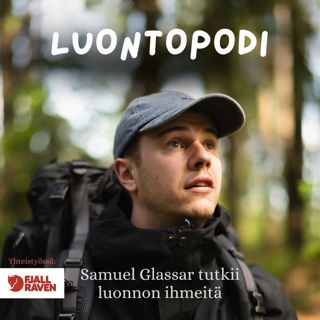
Mothers Day Massacre | Gruesome Murder of Girlfriend and Her Kids | Edward Covington Interrogation
Mothers Day Massacre | Gruesome Murder of Girlfriend and Her Kids | Edward Covington Interrogation Edward Covington, who killed his girlfriend and her two children, sentenced to death TAMPA — Seven years after a triple homicide that Hillsborough County's sheriff called the grisliest he had ever seen, a judge on Friday sentenced Edward Covington to death for the murder of his girlfriend and her two children. In a rejection of defense attorneys' arguments that Covington is mentally ill and should be spared the death penalty, the judge found that death was the appropriate punishment for one of the goriest homicide cases in Hillsborough's history. Covington, 42, absorbed the sentence impassively, surrounded by stone-faced lawyers. Outside the courtroom, Barbara Freiberg, the victims' mother and grandmother, said she approved of the judge's ruling, though she acknowledged it would likely entail years, if not decades, of appeals. "There's a relief knowing that he's going to get what he gave my children," she said. On May 12, 2008, Freiberg opened the door to her daughter Lisa's mobile home in Lutz and encountered a blood-soaked crime scene. Lisa Freiberg, 26, and her two children, Zachary Freiberg, 7, and Heather Savannah Freiberg, 2, had been beaten, choked and stabbed. Authorities said Covington had attacked the family with a hammer and knife. After killing the children, he dismembered their bodies. Sheriff's deputies found Covington, a former prison guard, cowering in a closet, wearing nothing but underwear and covered in scratches and traces of blood. Charged with three counts of first-degree murder, three counts of abuse of a dead body and one count of animal abuse for killing the family's dog, Covington sat in prison for years, waiting for his day in court. But when his trial began last fall, he stunned everyone, including the public defenders representing him, by abruptly firing them and announcing that he would plead guilty. "I expect you to sentence me to death," he told Hillsborough Circuit Judge William Fuente, adding that this was the sentence he would choose for himself. "I feel it's warranted. The Freibergs feel it's warranted. The state feels it's warranted. I have no problem with this." Covington's decision to forgo a jury trial left his fate entirely with the judge and prompted Fuente to issue a stern warning. He had encountered a similar situation only once before in his career, he told Covington, and he sentenced that defendant to death. On Friday, after more than six months of reviewing court transcripts and medical records, Fuente said the horrifying manner in which the three victims were killed outweighed the defense argument that Covington was driven by mental illness. From the outset of the case, Covington's lawyers portrayed him as a deeply disturbed man who, at the time of the murders, was not taking prescribed medications to control his bipolar disorder. Medical records showed that by age 15, he was taking the mood stabilizer lithium. His mother testified that throughout his teenage years and into adulthood, he swung wildly between periods of high energy and deep depression, was repeatedly hospitalized and tried to commit suicide multiple times. By the time his case went to trial, he was taking four different medications — Depakote, Seroquel, Zoloft and Klonopin.
21 Joulu 20241h 33min

Israel Keyes is the most terrifying serial killer you’ve probably never heard of - Serial Killer Documentary
Israel Keyes is the most terrifying serial killer you’ve probably never heard of - Serial Killer Documentary Israel Keyes is all of your worst fears personified into one of the most terrifying serial killers of the 21st century. February 1, 2012, began like any other day at work for 18-year-old Samantha Koenig, but it ended in unspeakable tragedy. Finishing up her shift at the Common Grounds coffee stand in downtown Anchorage, Alaska, the young barista was approached by a man wearing a ski mask who ordered coffee – a man who would later be named as Israel Keyes. After Samantha handed him the order, Keyes pulled out a gun and demanded money, and the terrified teen quickly complied. Forcing himself inside the stand, Keyes tied the young woman’s hands together with zip ties before forcing her into his white Ford Focus, where she tried – and failed – to escape the abductor, who held a gun to her head and said he would kill her if she tried again. Driving around town with Samantha still bound in the vehicle, Keyes explained to the terrified teen that this was simply a kidnapping for ransom and that if she cooperated, she’d be returned to her family unharmed. Keyes kept Samantha alive for several hours and even drove back to her coffee stand to retrieve her mobile phone. He then used it to send a fake text message to her boyfriend, who was due to pick her up after her shift. The text read: “Hey, I’m spending a couple of days with friends, let me dad know.” Keyes took Samantha to his property, where he tied her up in a shed. He turned his radio up so no one could hear her screams and pleas for help. After demanding Samantha’s address, Keyes made his way to retrieve her ATM card from her boyfriend’s truck. In a gut-wrenching twist, while stealing the debit card, Keyes was confronted by Samantha’s boyfriend – who was already on edge after discovering Koenig was not at work when he arrived to pick her up as well as having received the strange text message from her phone earlier, which had, in fact, been sent by Keyes. Thinking he was a random burglar attempting to break into his car, Samantha’s boyfriend ran inside to get help, while Keyes fled. Returning to his property, Keyes poured himself a glass of wine as he returned to his shed and raped a sobbing Samantha. He then strangled her to death. Keyes returned inside, packed for a pre-planned cruise in New Orleans, woke his daughter for school, and left for the airport. Returning to Anchorage on February 17, 2012, Keyes began preparing a ransom note, but first, he decided to remove Samantha’s body from the cupboard. He applied makeup to Samantha’s face – frozen and lifeless – before unsettlingly sewing her eyes open with fishing line to give her the appearance of being alive. He then took a Polaroid of her “holding” up that day’s newspaper.
21 Joulu 20241h 27min
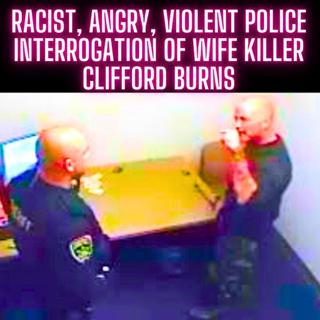
RACIST, ANGRY, VIOLENT Police Interrogation of Wife Killer Clifford Burns
RACIST, ANGRY, VIOLENT Police Interrogation of Wife Killer Clifford Burns WARNING: AUDIO CONTAINS EXTREMELY GRAPHIC, AS WELL AS RACIST, LANGUAGE AND DESCRIPTIONS. SOME VIEWERS MAY FIND THIS MATERIAL DISTURBING AND UNSUITABLE FOR CHILDREN. Warren County Sheriff's deputies question Clifford Burns on the night he is alleged to have fatally stabbed his wife, Patricia Burns. As Patricia Burns heaved her ham out of the freezer, she was looking forward to a quiet Christmas. It was December 22, 2013, and Patricia, 42, was spending the festive season at home with her daughters, Megan, 22, Harley, 16, and Autumn, 14. The family had been through so much. Patricia’s marriage to Clifford Burns, who was dad to Harley and Autumn, had been rocky. The couple met when Patricia was working at a Dunkin’ Donuts drive-through. Clifford had pulled up and decided there was something he fancied more than a doughnut. So he asked Patricia for her number. At first he’d seemed like a great catch – he had his own business, was a keen fisherman, and doted on Megan, her little sister Christalin and brother, Nick. But after their ’97 wedding, Clifford became violent. His traumatic past was often cited as the reason behind his abuse – he’d witnessed his father’s violence towards his mother. So Patricia gave him the benefit of the doubt, taking him back time and time again. Together they had their two girls, Harley and Autumn. She moved into a new apartment with the kids and began working as a nurse at a hospice, and also got a five-year restraining order against Clifford. Patricia began another relationship. But this new man also had a temper and was slapped with a restraining order after assaulting her, firing a gun into the ceiling and then having a standoff with police. Now, all Patricia wanted was a peaceful Christmas. Autumn texted her dad to wish him Merry Christmas, even though he’d not been in touch for eight months. His reply, which came as Patricia was defrosting the ham, was chilling. I have a special gift coming soon, something for everyone to talk about, and it will be hand-delivered on foot, not by car, it read. Autumn interpreted the message as a threat. Harley and Megan agreed, so they showed the text to their mum. 'Is he going to come here and kill us?' ‘Is he going to come here and kill us?’ Megan asked. But Patricia wasn’t concerned. ‘No Megan, he’s mean, he’s evil, but he’s not that evil,’ she said. Despite her mum’s lack of concern, Autumn tapped back a reply. Get it together, I know what you think you want to do, and believe me that won’t end well, she wrote in the message. The only reason you feel so bad is because of what happened between your parents. Christmas Eve Two days later, on Christmas Eve, Harley went to do some last-minute shopping. Patricia, Megan and Autumn remained at home, preparing Christmas dinner in the kitchen. This time, Patricia was preparing a turkey. Then there was a knock at the door. On the other side of it was a masked man in army fatigues. He was carrying a large hunting knife. The man grabbed Patricia and held her against the wall. Then he plunged the knife into her stomach. 'Megan ran over, grabbing the man and pulling his mask off.' Megan ran over, grabbing the man and pulling his mask off. It was Clifford. ‘Call the cops!’ Megan screamed to Autumn, who was frozen in terror. Clifford continued to stab their mum, before turning the knife on Megan, slashing her arm. Patricia, bleeding profusely, pleaded with her ex to stop. As Autumn called an ambulance, Megan ran out of the house, but her stepdad followed her. Approaching her, he ran off when diners at a restaurant nearby came out. Paramedics arrived, rushing them to the hospital – but Patricia didn’t make it. The beloved mum died from multiple stab wounds to her stomach and chest.
20 Joulu 20245h 13min

Serial Killer Levi Bellfield Documentary
Serial Killer Levi Bellfield Documentary Levi Bellfield is an English serial killer, sex offender, rapist, kidnapper and burglar. He was found guilty on 25 February 2008 of the murders of Marsha McDonnell and Amélie Delagrange and the attempted murder of Kate Sheedy, and sentenced to life imprisonment.
20 Joulu 202441min

Steven Murray | Locked Priest In Trunk then Murdered Him | Police Interrogation
Steven Murray | Locked Priest In Trunk then Murdered Him | Police Interrogation The motive for the killing isn't entirely clear. Murray told the St. Augustine Record for a story published in July 2016 that he had Robert in the trunk of the car in South Carolina and realized he could get in big trouble if Robert ever reported him. "I just (expletive) freaked out and I killed him," Murray told the newspaper in an interview from jail. Speaking more generally, Murray has told AP that he suffers from mental health issues and wanted to cause pain because of hurt he had suffered in his life. Authorities have said Murray has twice attempted to kill himself in jail since his arrest. Murray expressed both sorrow and defiance in public statements as he was taken from the courthouse after hearings last year. In postcards and calls to AP from jail, he has repeatedly said he cries over Robert's death and that he is sorry. "My apologies go out to the family and friends of Father Rene," he said Tuesday. "I hope with time they can get some closure." Murray has said that his father abused him badly while he was growing up in South Carolina. His sister, Bobbie Jean Murray, told AP that the abuse led Murray to drugs and crime at an early age. He met Robert through a girlfriend, Ashley Shreve. The couple did drugs together, and Robert often gave them money, against their families' wishes. Robert's colleagues have said he was devoted to helping the poor, often scraping leftovers from plates into baggies to give to the homeless. He also had great compassion for addicts, sometimes going so far as to lend them his car while he walked home alone through dangerous neighborhoods. Because he devoted his life to helping society's most troubled, he was also aware that he could become a victim of violence. More than two decades before his death, he signed a "Declaration of Life," calling for his killer to be spared execution in the event of his murder. That did not sway prosecutors, who have said their decision to seek the death penalty was based on the aggravated nature of the slaying.
20 Joulu 20241h 15min
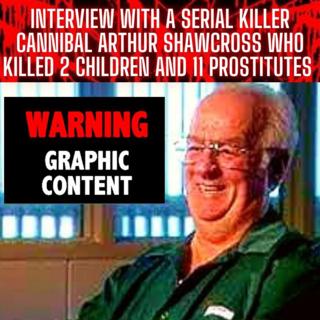
Interview With A Serial Killer Cannibal Arthur Shawcross Who Killed 2 Children and 11 Prostitutes (True Crime Documentary)
Interview With A Serial Killer Cannibal Arthur Shawcross Who Killed 2 Children and 11 Prostitutes (True Crime Documentary) There is no doubt that Arthur Shawcross is a psychopath. Found guilty of killing 2 children and 11 prostitutes his tales of cannibalism and mutilation have made him one of America's most notorious serial killers. That he killed 13 people by asphyxiation is certain.
20 Joulu 202444min
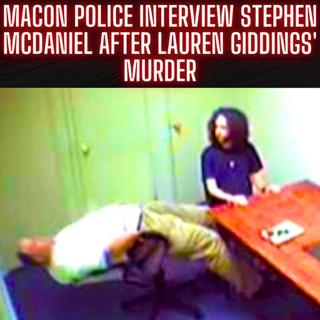
Stephen McDaniel's First Interview with Macon police after Lauren Giddings' Murder
Stephen McDaniel's First Interview with Macon police after Lauren Giddings' Murder Stephen McDaniel's first interview with the Macon Police Department. McDaniel later pleaded guilty in the killing of Lauren Giddings, a Mercer University law student. As part of the plea deal, McDaniel was sentenced to life in prison with the chance of parole in 2041. Macon police interview Stephen McDaniel after Lauren Giddings' disappearance This is a video of Macon police interviewing Stephen McDaniel for the first time following the disappearance of his fellow Mercer University law student, Lauren Giddings.
19 Joulu 20242h 1min
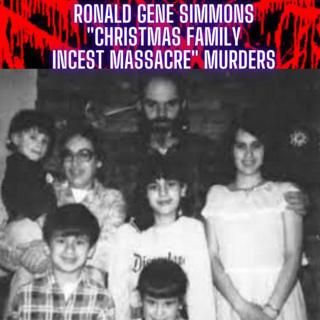
Ronald Gene Simmons "CHRISTMAS FAMILY INCEST MASSACRE" murders
Ronald Gene Simmons "CHRISTMAS FAMILY INCEST MASSACRE" murders On December 22, 1987, Ronald Gene Simmons began a killing spree that would be the worst mass murder in Arkansas history and the worst crime involving one family in the history of the country. His rampage ended on December 28, 1987, leaving dead fourteen members of his immediate family and two former coworkers. Ronald Gene Simmons was born on July 15, 1940, in Chicago, Illinois, to Loretta and William Simmons. On January 31, 1943, William Simmons died of a stroke. Within a year, Simmons’s mother married again, this time to William D. Griffen, a civil engineer for the U.S. Army Corps of Engineers. The corps moved Griffen to Little Rock (Pulaski County) in 1946, the first of several transfers that would take the family across central Arkansas over the next decade. On September 15, 1957, Simmons dropped out of school and joined the U.S. Navy. His first station was Bremerton Naval Base in Washington, where he met Bersabe Rebecca “Becky” Ulibarri, whom he married in New Mexico on July 9, 1960. Over the next eighteen years, the couple had seven children. In 1963, Simmons left the navy and approximately two years later, he joined the air force. During his twenty-two-year military career, Simmons was awarded a Bronze Star, the Republic of Vietnam Cross for his service as an airman, and the Air Force Ribbon for excellent marksmanship. Simmons retired on November 30, 1979, at the rank of master sergeant. On April 3, 1981, Simmons was being investigated by the Cloudcroft, New Mexico, Department of Human Services for allegations that he had fathered a child with his seventeen-year-old daughter, Sheila. Fearing arrest, Simmons fled first to Ward (Lonoke County) in late 1981 and then to Dover (Pope County) in the summer of 1983. The family took up residence on a thirteen-acre tract of land that would become known as “Mockingbird Hill.” The residence was constructed of two older-model mobile homes joined to form one large home and was surrounded by a makeshift privacy fence, as high as ten feet tall in some places. The home did not have a telephone or indoor plumbing. Simmons worked a string of low-paying jobs in the nearby town of Russellville (Pope County). He quit a position as an accounts receivable clerk at Woodline Motor Freight after numerous reports of inappropriate sexual advances. He went to work at a Sinclair Mini Mart for approximately a year and a half before quitting on December 18, 1987. Evidence indicates that Simmons bludgeoned and shot his wife on December 22, 1987. Simmons also bludgeoned and shot his visiting son, twenty-nine-year-old Ronald Gene Simmons Jr. He then strangled his three-year-old granddaughter. All three bodies were later found in a shallow pit Simmons had instructed the children to dig months before for a third family outhouse. Later the same day, the Dover school bus dropped off the younger Simmons children for their Christmas break from school. Based on crime scene investigation, it is believed the Simmons children (ages seventeen, fourteen, eleven, and eight) were separated and killed individually, by strangulation and/or drowning in a rain barrel. Their bodies, too, were found in the hole for the outhouse. The older Simmons children had been invited to the Simmons home on December 26, 1987, for an after-Christmas dinner. Twenty-three-year-old William H. Simmons II, his twenty-one-year-old wife, Renata May Simmons, and their twenty-month-old son, all of Fordyce (Dallas County), were likely the first to arrive. William and Renata were shot, and their bodies were left by the dining room table, and covered with their own coats and some bedding. The child was killed and placed into the trunk of a car behind the Simmons home. Next to arrive were Simmons’s twenty-four-year-old daughter, Sheila, and her husband, thirty-three-year-old Dennis Raymond McNulty, as well as their children, seven-year-old Sylvia (the daughter of Sheila and her father) and twenty-one-month-old Michael. Sheila was shot, and her body was laid on the dining room table and covered with a tablecloth. Simmons shot Dennis and strangled Sylvia. Michael was strangled and placed into the trunk of yet another parked car. Later this same day, Simmons drove to Russellville, where he stopped at a Sears store and picked up Christmas gifts that had been ordered but had not made it in before the holiday. Later that night, he drove to a private club in Russellville. Then he went home and waited out the weekend. On Monday, December 28, 1987, Simmons drove a car that had belonged to his son, Ronald Jr., to Russellville. He purchased a second gun from Walmart Inc. His next stop was the Peel, Eddy and Gibbons Law Firm. After entering the building, Simmons shot and killed receptionist/secretary Kathy Cribbins Kendrick. He next went to the Taylor Oil Company, where he shot and wounded Russell “Rusty” Taylor, the owner of the Sinclair Mini Mart where he had worked, and then shot and killed J. D. (Jim) Chaffin, a fireman and part-time truck driver for Taylor Oil. Simmons shot at and missed another employee before exiting the building. Simmons then went to the Sinclair Mini Mart, where he shot and wounded Roberta Woolery and David Salyer. His last stop was the Woodline Motor Freight company. Simmons located his former supervisor, Joyce Butts, and wounded her in the head and chest. He then took worker Vicky Jackson at gunpoint into the computer office and advised her to phone the police. Simmons allegedly told Jackson: “I’ve come to do what I wanted to do. It’s all over now. I’ve gotten everybody who wanted to hurt me.” He surrendered to Russellville police when they arrived. Simmons was sent to the Arkansas State Hospital in Little Rock (Pulaski County) for a competency evaluation by staff psychiatrist Dr. Irving Kuo. Kuo found Simmons to be sane and capable of standing trial. Robert E. “Doc” Irwin and John Harris were appointed by the court to represent Simmons. The prosecuting attorney was John Bynum. Jury selection for the first trial took less than six hours. Simmons was convicted on May 12, 1988, in the Franklin County Circuit Court for the deaths of Kendrick and Chaffin. On May 16 Judge John Samuel Patterson sentenced Simmons to death by lethal injection plus 147 years. Simmons refused all rights to appeal. Simmons was found guilty of fourteen counts of capital murder in the deaths of his family members on February 10, 1989, in the Johnson County Circuit Court, with Judge Patterson presiding. Bynum offered a possible motive when he presented an undated note that was discovered in a safe deposit box at a Russellville bank after Simmons’s arrest. The letter seemed to indicate a strong love/hate relationship between Simmons and his daughter Sheila. After the judge ruled the letter admissible, Simmons lashed out at Bynum, punching him the face, and then unsuccessfully struggled for a deputy’s handgun. Officers rushed him out of the courtroom in chains. Simmons was sentenced to death by lethal injection on March 16, 1989. He again waived all rights to appeal. KTHV reporter Anne Jensen conducted a series of interviews with Simmons in February and March 1989. On March 1, 1989, Simmons was found competent to waive his rights to appeal his conviction. However the filing of Whitmore v. Arkansas challenged this right. Reverend Louis Franz and Jonas Whitmore contended that Simmons using his right to refuse appeal in fact jeopardized the appellate rights of other death row inmates. By 7–2 vote, the Supreme Court justices threw out this appeal; however, the ongoing legal proceedings had prevented the execution of Simmons from being carried out. Simmons was watching television and eating what he thought would be his last meal when the news of his stay of execution was announced. On May 31, 1990, Governor Bill Clinton signed Simmons’s second execution warrant for June 25, 1990. This was the quickest sentence-to-execution-to-death time in United States history since the death penalty was reinstated in 1976. Simmons refused all visitors, including legal counsel and clergy. His last words were: “Justice delayed finally be done is justifiable homicide.” No family members claimed the body, so Simmons was buried in a paupers’ plot at Lincoln Memorial Lawn in Varner (Lincoln County).
19 Joulu 202440min



















